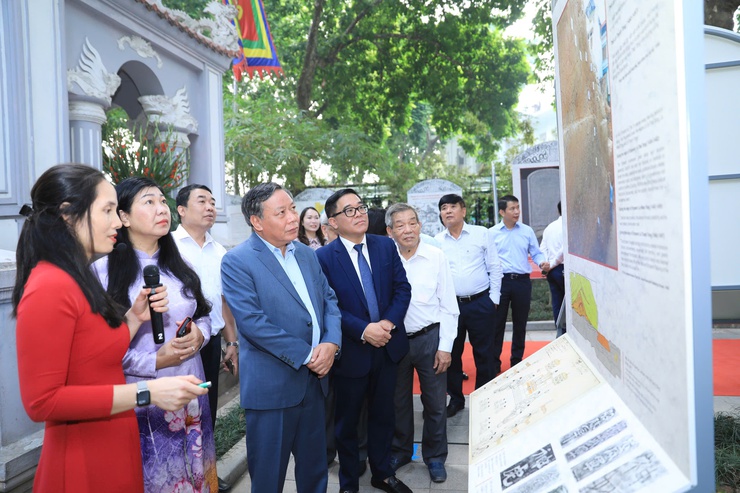Titled "Emperor Le Thai To – Founder of the Later Le Dynasty", the exhibition is being held at the Special National Relic dedicated to Emperor Le Thai To, located on Le Thai To Street, Hang Trong Ward, Hoan Kiem District, Hanoi.

Permanent Deputy Secretary of the Hanoi Party Committee Nguyen Van Phong at the event.
Speaking at the opening ceremony, Director of the Hanoi Department of Culture and Sports Do Dinh Hong said that the exhibition uses a modern display approach combining legends, historical accounts, and archaeological findings.
The content highlights King Le Loi, also known as Binh Dinh Vuong, and the Lam Son Uprising; the coronation of Emperor Le Thai To and his efforts to rebuild the nation; the legacy of the Later Le Dynasty, including architectural remains, artifacts, diagrams, and maps. It also features activities honoring and preserving the memorial site of King Le Thai To and other notable relics representing the historical imprint of Thang Long-Hanoi, especially in the cultural space of Ho Guom (Sword Lake).
A key experience includes the re-enactment of the scene where King Le Thai To returned the legendary sword to the divine turtle on Luc Thuy Lake (Hoan Kiem Lake) as part of the nighttime tour "Mystical Ngoc Son Night."
Emperor Le Thai To (1385–1433), born Le Loi, was a national hero and leader of the Lam Son Uprising, founding the Later Le Dynasty. He was born and raised in Lam Son (now Tho Xuan District, Thanh Hoa Province).

The city's senior officials observe the exhibition.
From a young age, Le Loi displayed exceptional intelligence, bravery, and virtue. In 1416, he and 18 close associates held the Lung Nhai Oath. In 1418, he raised the banner of rebellion, proclaiming himself Binh Dinh Vuong, gaining widespread support from people and talented leaders across the land.
Under Le Loi's skillful leadership, the Lam Son army grew into a disciplined and organized force deeply connected with the people. After ten years of hardship and relentless effort, the Lam Son Uprising achieved complete victory, uniting the nation.
On April 15, 1428, Binh Dinh Vuong Le Loi ascended the throne as Emperor, adopting the reign title Thuan Thien and naming the country Dai Viet. He established the Later Le Dynasty. During his reign, Emperor Le Thai To introduced laws, music ceremonies, civil examinations, and military reforms; appointed officials; established administrative systems; revived the economy; restored production; and implemented the quan dien land policy. These efforts ushered in an era of independence, prosperity, and self-governance for Dai Viet, marking the most glorious and enduring dynasty in Vietnam's feudal history.